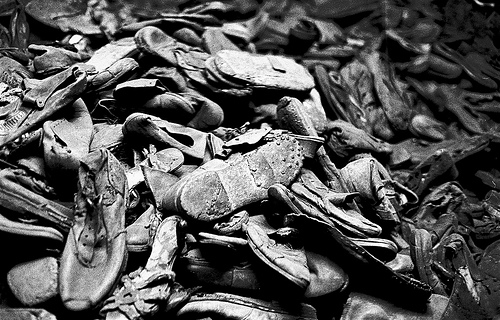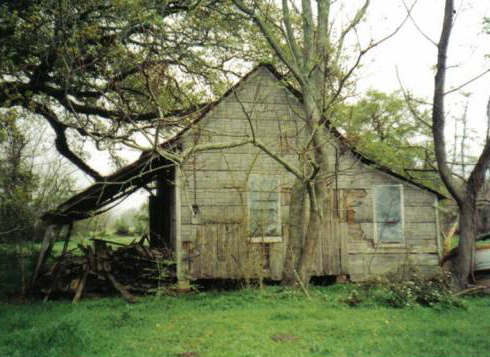Nicolas R. Laracuente, Kentucky Heritage Council
Several years ago at a presentation Dig into Woodford County History, one person noted that this was the first archaeology presentation that they went to that didn’t focus solely on artifacts. Usually when someone visits a dig one of the first questions is “what have you found?” Artifacts are definitely cool. There is nothing quite like the feeling of knowing that you are the first person to hold something that was discarded hundreds (or even thousands) of years ago.
But artifacts are much more than just things you can pick up and stick in a bag. When recovered, with the context intact, and examined in association with other artifacts they are a bridge to stories about the past. I spend most of the time during my presentations speaking about these stories rather than the individual artifacts themselves. Although the artifacts themselves sometimes provide a focal point and scaffolding to guide an audience across that bridge to the story or idea you want to relay.
Artifacts elicit emotional responses in people. I will argue this point with a shoe… actually, a few of them. But first, some background.
On the American Anthropological Association Website, Anthropology is defined as the “study of humans past and present…A central concern of anthropologists is the application of knowledge to the solution of human problems”. An anthropological subfield, archaeology studies human cultures through their material remains.
So what?
What does an archaeological perspective add to anthropology? Materials provide a focal point that grounds abstract ideas or experiences. Family pictures, plaques, or mementos serve as special reminders of the past events and experiences, but materials, and the social performances in which they are set, can work for you as well. Pipe cleaners can facilitate healing after a childhood in the shadow of domestic violence. The performance of two black artists demonstrating graffiti art in a room full of white academics challenges several layers of assumptions. Pipe cleaners and pieces of wood are common. The importance of these particular material artifacts come from their context or the stories associated with them.
Shoes. We wear them nearly everyday. They are commonplace. In the right context they are effective bridges to facilitate an understanding of historic events. For me, the most powerful example of this bridge is the shoe room at the Holocaust Museum.

Image from Flickr user Anna Lundqvist
This room engages more than your ears listening to a story. Eyes aren’t enough to process the materials in front of you. The smell of leather overwhelms you. Context provided by the rest of the museum solidifies your understanding of exactly how horrific the Holocaust was. Reviews of the museum are a testament to the impact of this exhibit.
When I was the park archaeologist at Cane River Creole National Historical Park, I excavated a unit under the collapsed chimney at the North Tenant Cabin at Oakland Plantation:
The artifacts recovered from the excavation included one leather shoe. Speaking with park visitors and other archaeologists in the area contextualized this artifact in the material culture of hoodoo. The shoe was located underneath an opening (the chimney) in the house. Park visitors told me the placement was meant to keep witches and evil spirits out of the house. Similar caches of artifacts are found in Annapolis, Maryland. Here is a webpage on hoodoo at the James Brice House in Annapolis, a .pdf report on excavations at the Adams-Kitty House (see appendix 1), and some videos of Mark Leone discussing the subject.
Recently, during a project for the Kentucky Archaeology Survey we encountered some brick piers from a historic structure. Here’s an image from the site:

During the excavation, we recovered several leather shoes and shoe fragments. While archaeologists are still working on an interpretation of the site, its location beside the tallest building in Lexington is remarkable. This shot was from inside the excavation trench:
In this context, leather shoes, and this site, could provide a focal point from which to discuss the historical development of Lexington, Kentucky. Something that we didn’t realize at the time was that these archaeological deposits were what was left of a cobbler shop owned by a free African American before the civil war. Now when I see the skyline of Lexington, I think of that tallest building as a marker pointing to a story that was buried beneath pavement.
At the 2011 Now What Lexington conference, I co-led a session on public archaeology. Attempting to conform to the unconference format, we tried to speak only enough to get the conversation moving and the comments were very valuable (a post for another time). One of the participants, Mick Jefferies, remarked that, to him, archaeology was about the stories we tell. They promote modern people to become viscerally rooted in their communities.
I can think of no better way to put it myself, thanks Mick.
Much of this post is borrowed from one that I wrote for Ryan Anderson’s Anthropologies Project in 2011. See more of his archaeology issue here: http://www.anthropologiesproject.org/2011/05/issue-3.html



